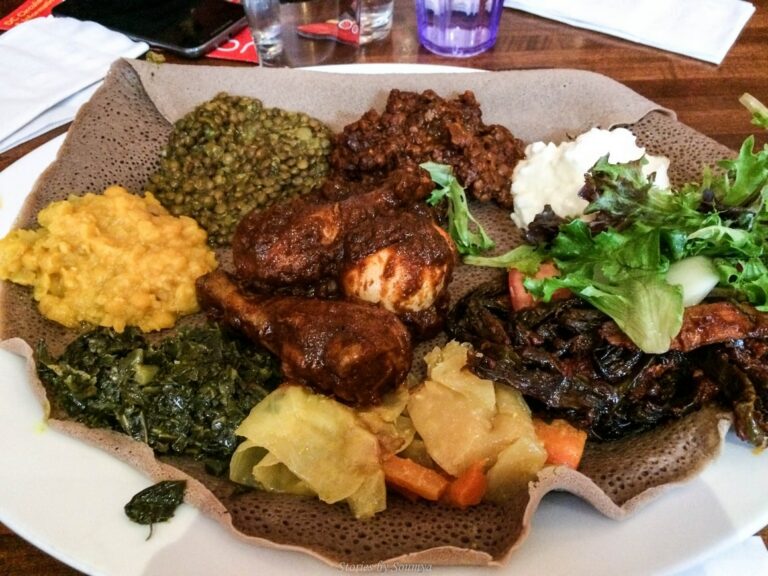Introduction: Ethiopian Cuisine
Ethiopian cuisine is one of the most diverse and distinctive cuisines in the world, renowned for its rich and fragrant flavors, hearty stews, and unique spice blends. Ethiopian cuisine is heavily influenced by its geography, history, and religious traditions, and is characterized by a wide range of ingredients, cooking techniques, and flavor combinations.
Staple Grains: Teff and Barley
Teff and barley are the two most widely used grains in Ethiopian cuisine. Teff is a tiny grain that is native to Ethiopia and is used to make injera, a sourdough flatbread that is a staple of Ethiopian cuisine. Barley is also a popular grain in Ethiopia, and is used to make a thick porridge called genfo, as well as to make bread and beer.
Spices and Herbs: Berbere and Nigella
Spices and herbs are an essential part of Ethiopian cuisine, and are used to add flavor, aroma, and color to dishes. Berbere is a fiery spice blend that is made from a mix of chili peppers, garlic, ginger, coriander, cumin, and other spices, and is used to flavor meat, vegetables, and stews. Nigella, also known as black cumin, is a small black seed that is used to add a nutty and slightly bitter flavor to dishes.
Protein Sources: Beef, Lamb, and Chicken
Beef, lamb, and chicken are the most commonly used meat sources in Ethiopian cuisine, and are used to make a range of stews, grilled dishes, and sautés. Dishes such as doro wat, a spicy chicken stew, and kitfo, a raw beef dish that is seasoned with spices and served with injera, are examples of popular Ethiopian meat dishes.
Legumes and Vegetables: Lentils and Collard Greens
Legumes and vegetables are an important part of Ethiopian cuisine, and are used to add flavor, texture, and nutrition to dishes. Lentils are a staple legume in Ethiopia, and are used to make a variety of stews and soups. Collard greens, also known as gomen, are a popular leafy green vegetable in Ethiopia, and are often cooked with onions, garlic, and spices.
Dairy and Fermented Foods: Ayib and Injera
Dairy and fermented foods are also an important part of Ethiopian cuisine. Ayib, a type of homemade cheese, is often served with injera and is used as a topping for stews and sautés. Injera, the sourdough flatbread made from teff, is also a fermented food, and is eaten with almost every meal in Ethiopia.
Oils and Fats: Sesame Oil and Butter
Sesame oil and butter are the two most commonly used oils and fats in Ethiopian cuisine, and are used to add flavor and richness to dishes. Sesame oil is used to sauté vegetables and meat, while butter is used to make sauces and stews.
Beverages: Coffee and Tej
Coffee and tej, a traditional Ethiopian honey wine, are the two most popular beverages in Ethiopia. Coffee is a central part of Ethiopian culture, and is often served in elaborate ceremonies. Tej is made by fermenting honey and water with hops or gesho, a type of buckthorn plant, and is often served in small, gourd-shaped vessels called bereles.

